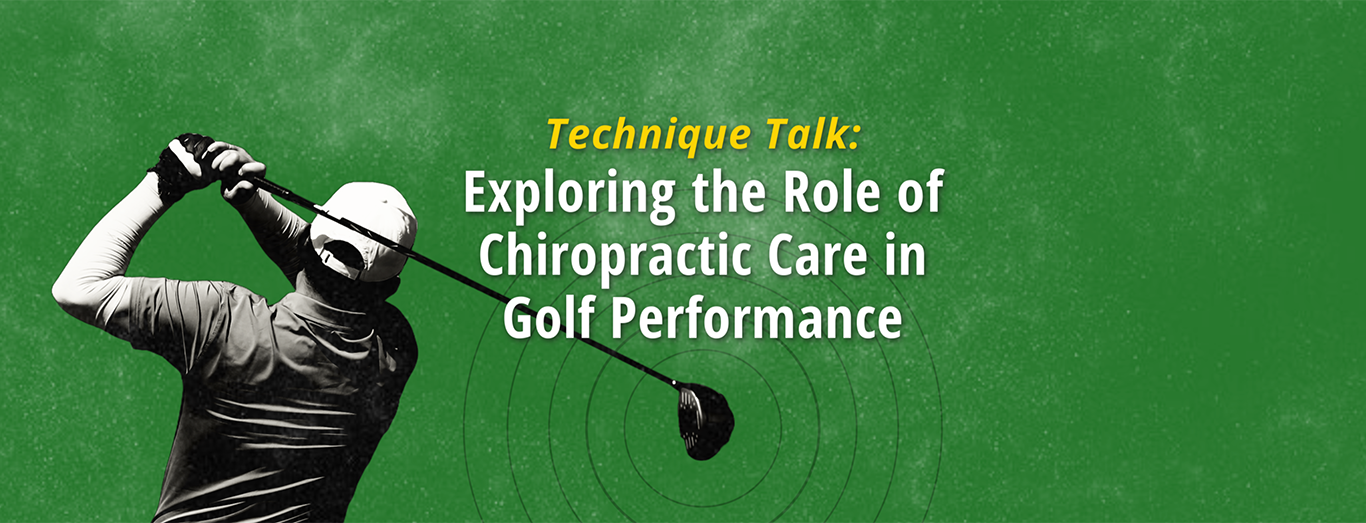By Robert A. Ruffalo, PT, DC
Unlocking the Body Swing Connection
Golf is a game of concentration, determination, and, often, frustration. Many golfers find themselves struggling to “find their swing” despite investing in the best clubs and spending large amounts of time and money on lessons. Players are legally allowed to have only 14 clubs in the golf bag, all of which must meet the exact standards established by the PGA for competition.
However, there is a fifteenth club in the player’s bag with limitless potential and no restrictions on enhancing the player’s game: their body. Fitness level, mobility, stability, strength, power, and balance can be the edge that unlocks the Body Swing Connection.
The Importance of Chiropractic Care in Golf
Chiropractic care is about identifying the root cause of problems rather than merely treating symptoms. By examining how the body moves through the various stages of the golf swing, we can determine where dysfunction lies, rather than just addressing the symptoms of a poor swing. The Body Swing Connection employs various tests and measurements established by the leaders in golf fitness and training, the renowned TPI (Titleist Performance Institute) program.
Understanding the Mobility-Stability Model
First, we must understand the mobility-stability model developed by Mike Boyle & Gray Cook, also known as the joint-by-joint approach. This model is based on the idea that the body operates in an alternating pattern of stable segments connected to mobile joints. When this pattern is disrupted, dysfunction and compensation occur.
Key Components of the Mobility-Stability Model:
- Stable Segments: Feet, knees, lumbar spine, scapulae, and elbows.
- Mobile Joints: Ankles, hips, thoracic spine, shoulders, and wrists.
Applying the Model to the Golf Swing
When one or more areas are altered, problems and injuries can arise. For a right-handed golfer, the backswing requires:
- Adequate right hip internal rotation
- Adequate left hip external rotation
- Lumbar stability
- Sufficient thoracic spine rotation
During impact and follow-through, the right hip must move into external rotation and the left hip into internal rotation, while the thoracic spine transitions from right rotation in the backswing to left rotation in the follow-through phase. If any of these areas lack proper mobility, other areas compensate, turning stable segments into mobile ones and potentially causing injury and pain.
Example of Compensation Leading to Injury:
If the hips lack internal rotation and the thoracic spine lacks sufficient rotation, the lumbar spine, which should remain stable, will compensate and take over the movement, potentially leading to injury. The lumbar spine’s sagittal facets are designed for flexion and extension. Forced rotation due to compensation can result in facet or even disc injury.
The Role of TPI Assessments
This is where the tests and measures developed by TPI become essential in identifying body flaws and movement patterns. Recognizing specific swing faults and collaborating with both a golf professional and a chiropractor, a customized game plan can be created to enhance a golfer’s potential by correcting body movements and integrating them with golf instruction.
Practice with Purpose
It’s not about how much someone practices, but how well they practice. Practicing incorrectly due to improper body movement will, over time, make the golfer proficient at being bad. Chiropractors, with their hands-on approach to joints and soft tissue, can significantly impact amateur, recreational, and professional golfers by helping them prevent injury and extend their playing years.
Key Takeaway:
“Assess or it’s just a guess!” TPI has specific tests that clients undergo to identify limitations and problems affecting the golf swing. Once these tests are completed and graded, practitioners can develop customized programs to eliminate dysfunctions and correct deficits, thereby improving the client’s performance by enabling them to complete the golf swing movement pattern without compensation.
Conclusion
Chiropractic care plays a crucial role in enhancing golf performance by addressing the underlying causes of movement dysfunctions. Through the Body Swing Connection and TPI assessments, chiropractors can help golfers achieve better mobility, stability, and overall performance. By integrating chiropractic care with professional golf instruction, golfers can practice with purpose and play the game longer and more effectively.
ABOUT THE AUTHOR:
Dr. Robert A. Ruffalo, PT, DC, is a chiropractor and physical therapist specializing in the biomechanics of the golf swing. He holds certifications in Medical Level 3 and Level 2 Junior from the Titleist Performance Institute and is FMS certified.

